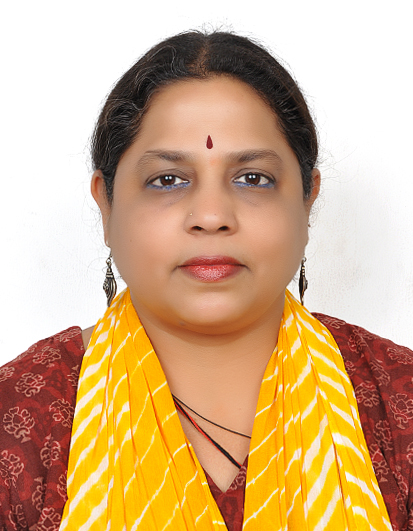 Dr Janaki Turaga holds an MA Sociology, MPhil Environmental Sociology, both from Bangalore University, and a PhD from the Centre for the Study of Social Systems, School of Social Sciences, Jawaharlal Nehru University. She is a sociologist specializing in textiles, arts, crafts of India, and environment. Her work in textiles ranges from historical to contemporary textile traditions; fashion; bast fibre textile traditions of India; commodification of Indian art and craft traditions; handloom saris of south and eastern India; Kalamkari, embroidery traditions of northwest India etc. Her work is interdisciplinary and focuses on both in-depth understanding as well as interlinkages.
Dr Janaki Turaga holds an MA Sociology, MPhil Environmental Sociology, both from Bangalore University, and a PhD from the Centre for the Study of Social Systems, School of Social Sciences, Jawaharlal Nehru University. She is a sociologist specializing in textiles, arts, crafts of India, and environment. Her work in textiles ranges from historical to contemporary textile traditions; fashion; bast fibre textile traditions of India; commodification of Indian art and craft traditions; handloom saris of south and eastern India; Kalamkari, embroidery traditions of northwest India etc. Her work is interdisciplinary and focuses on both in-depth understanding as well as interlinkages.
Dr Janaki Turaga’s work on a contemporary fashion trend in India on holy writing (‘Being fashionable in the globalization era in India: Holy Writing on Clothes’ in Modern Fashion Traditions, eds., MA Jansen and J Craik, 2016) highlighted the unique nature of Indian fashion. Her work on Chamba Rumal embroidery tradition (‘Ritualistic Folk Art Embroidery: A New Thematic Catergory of Pahari Embroidery Tradition’ in Splendors of Pahari Embroidery, eds., A Pathak and BK Sahay, 2018) opened up a new area of research. Her paper on ‘Owning a Colonial Object: Mapping the negotiations of the Royals and the Subaltern in India’, was presented at the National Museum Denmark, Copenhagen, in September 2016. She has also published articles on bast fibre textile traditions, Telia Rumal and Kotpad textile traditions, etc.
Dr Janaki Turaga’s work on environment ranges from ecological movements, alternative development paradigms, biodiversity conservation and urban avian ecology etc.
Abstract of Lectures
Lecture 1: Highlights of India’s Textile Traditions
The first lecture deals with the broad trends of textile history of India from Bhimbetka cave painting to late 19th century CE. It focuses on those textiles that India was famous for, from all regions of the country over ages, and highlights the science and technology behind them that made them world renowned. The key traditions focused on are:
- Gujarat: Block printing and Patola. Block printed textiles were exported to Egypt as seen in the Fostat remains of 14th century CE and to South and Southeast Asia; patola, a double ikat weave, was exported to Southeast Asia which in turn resulted in the development of a double ikat tradition in that region.
- Kashmir: Pashmina shawls were coveted by the European royalty; they were so fine that an entire shawl could pass through a ring. The Kairi motif was so popular that it transformed into the Paisley motif. The popularity of the shawls resulted in the development of shawl manufacturing industry in France.
- Kalamkari, Chintz: Hand-painted and block-printed textiles using the mordant and resist method that were produced along the Coromandel Coast in South India were extensively exported to the West and the East. These textiles were used as an exchange medium by Western trading companies to buy spices from Southeast Asia.
- Bengal: Muslins and embroidery were exported from this region. The Portuguese got many products embroidered from here.
- Cottons and Muslins: Fine cottons and muslins were a significant trade item to both East and West.
Fine and daily wear textiles were manufactured in India using numerous technologies: handlooms, dyeing processes-mordant, resist processes, tie dye; on-loom and off-loom embellishments etc. Many textiles were also imported, such as Chinese mulberry silk and brocade from Persia and China. A wide variety of technologies and science existed in the hands of the people to make dyes and process fibres: bast, cotton and wild silks of tassar, muga and eri, the entire weaving process from raw materials to the finishing touches to the product. Numerous communities that did specific work emerged in each region. Rangrez are a community of dyers.
Expensive and precious metal threads had a niche production in each region and consumption by a niche clientele, while the commonly consumed products had a more widespread clientele. Both coarse and fine textiles were exported along land and sea routes.
Lecture 2: Science and Technology behind Indian Textiles
Contemporary textiles samples from different parts of the country are used to examine the science and technology behind each textile tradition, including looms, materials used, dyeing and printing processes, on- and off-loom embellishments. Communities involved — producers and consumers — are also examined. The samples are contemporary, signifying the continuity of tradition of science and technology and skill sets.
The contemporary samples are:
- Gujarat: Block printing, e.g. Ajrakh; Patola: sample from Telengana;
- Tamil Nadu: Kanchipuram; Kuppadam technology using 3 shuttles.
- Varanasi: Brocades — zari and Amru; very fine cloths woven with different technologies, such as multiple warps and wefts.
- Central Indian Tribal Belt: Odisha, Chhattisgarh and Jharkhand; coarse cotton cloths woven on different kinds of looms.
- Northeast India: Loin loom product; Eri shawl from Assam